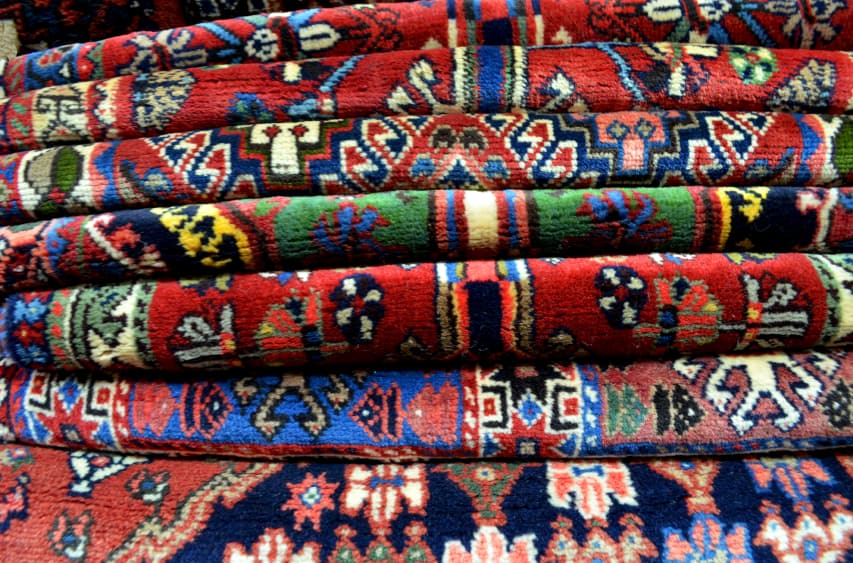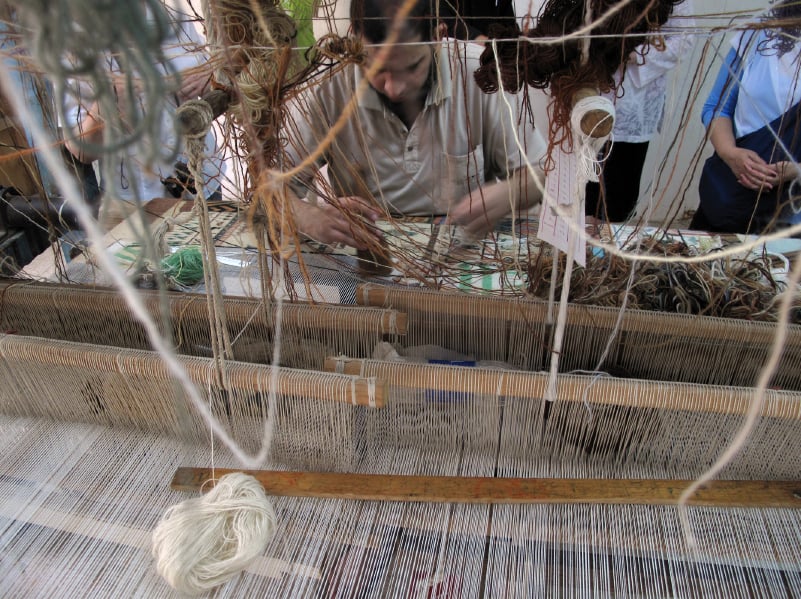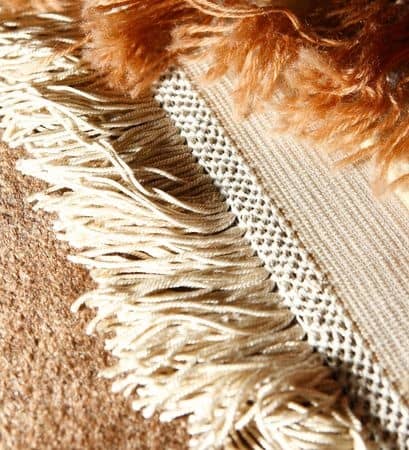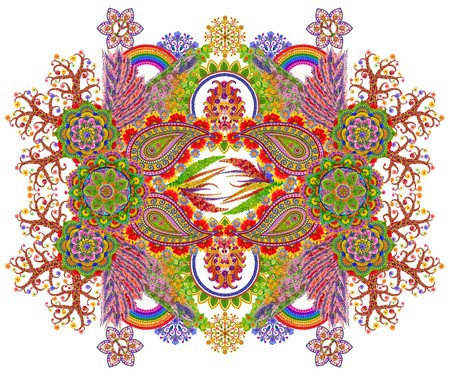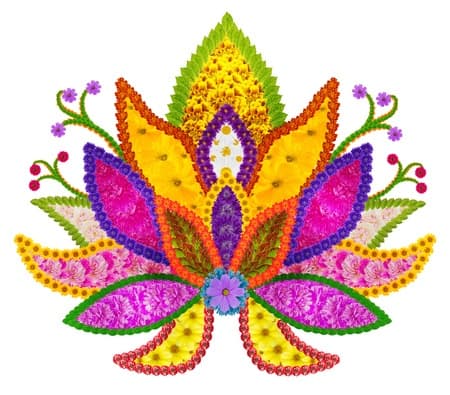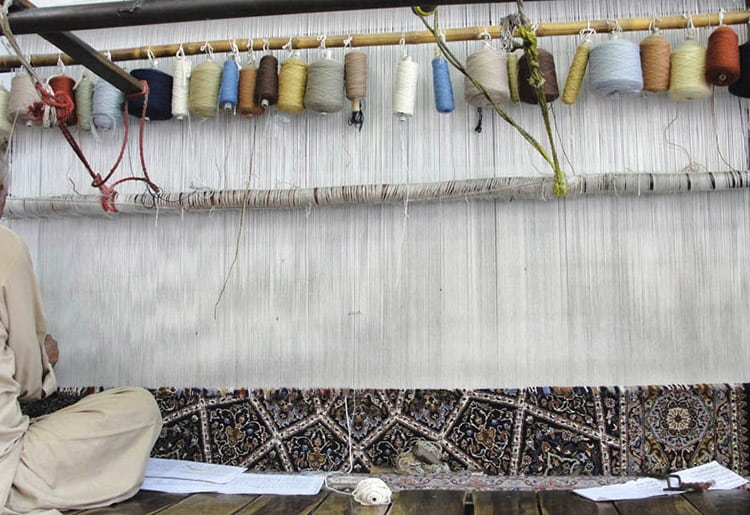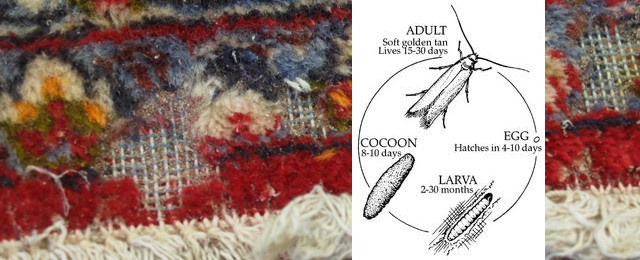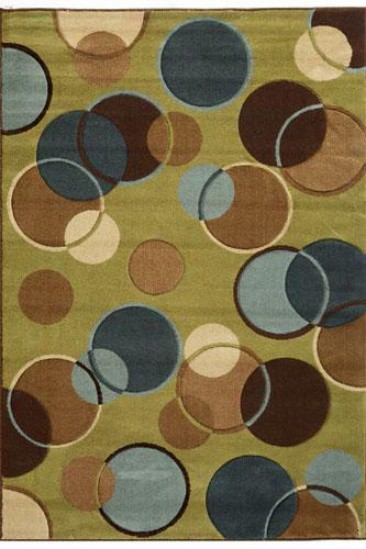Persian rugs are one of the oldest known – and to many collectors, the finest- oriental rugs that add mystery (and beauty) to every home. However, before buying one, first be sure these carpets are indeed for you. To help you evaluate, we will give you inside information to guide you in the world or Persian carpets and rugs!
Hand- or Machine-Made?
It depends on what you want: to buy a valuable Persian Rug that took at least 8 months (and up to years) to make it or a carpet just for covering that lacks the authenticity, durability, and charm of the real thing? Machine-made Persian carpets are not real Persian rugs; it takes minutes to make them and are a poor investment opportunity, considering that you won’t resell them after years and make much profit, unlike with handmade Persian rugs that only increase in value over time. So, you may pay less for a machine-made Persian carpet but you are actually making a poor investment that won’t bring you money in the long run (remember: Persian rugs are like good wine – they get more valuable after years!).
If you buy a machine-made Persian rug, expect it to deteriorate and fade with age, which is definitely not the case with a handmade one.
How to Tell a Machine-Made from a handmade Persian Rug?
You need to learn how to recognize the difference, and a quick test will reveal whether a rug you are about to buy is handmade or not. Just turn the carpet upside down. Look at the back. Do you see the pattern clearly? It has to be as distinct as on the face. Also, note that the clearer the pattern on the back, the better the quality of the carpet. If it doesn’t, the rug is machine-made. If your rug passes this first test, bend it back on itself. This should be enough to allow you to see the base of the tufts and the roots of the pile. Do you see rows of knots? Then the rug is handmade!
If you have made a purchase online, you can still test the rug at home. Most retailers provide clients with 30 days (at least) back guarantee (more on how to identify authentic handmade oriental rugs here!)
What are the Materials Used to Make Oriental Carpets?
Persian rugs, like all other oriental rugs, require long hours of weaving and work. There are basically two kinds of knots. The Persian Senneth knot is used to make Persian carpets and is a simple knot that allows for more flowing outlines and occupies less space.
That said, natural materials are significant for Persian rug value because they make the rug more durable in wear and tear. Also, the rug cleans better, stays clean for long, and retains dyes well. Not to mention the artistic value Persian rugs get from the combination of natural dyes and the fact that they don’t contribute to pollution or allergies.
The majority of oriental rugs are made from 5 primary materials:
1. Cotton
2. Wool
3. Jute
4. Silk
5. Animal hair
I) Wool Persian Carpets & Rugs
The most often used in a carpet is wool woven onto cotton. Also, there are some variations of the materials mentioned before. However, what determines the value of a wool rug is the quality of the wool. To evaluate whether the wool is good or not, which is vital when buying a Persian wool rug, check out these Rug Tips, where this issue is explained in fuller.
II) Cotton Persian Rugs & Carpets
Cotton has several advantages. It makes a strong basic material that allows fine weaving, doesn’t lose its shape, and can be spun into extremely thin strands. Unfortunately, it is also predisposed to mildew.
The Mysterious Veil Surrounding Every Persian Rugs
Every design on Persian rugs has a meaning, and this makes buying one even more fascinating! There is a story recorded in these carpets during the weaving process, from battles won and lost to superstitions, tragic love stories, important leaders, religion, and more. Some of the most used designs include flowers, curvilinear, animals, and birds. However, THE most used design is the prayer arch and the tree of life that represents eternal life and can be seen in prayer rugs, as well as other Persian carpets. The most remarkable lifelike trees are produced in Persian towns, such as Tabriz, Qum, and Isfahan.
That aside, if you see something that has the shape of a vase, you must know that it is the vase of immortality while a medallion with a forest of flowers around it (found in the center of the rug) is the garden of paradise design. It may also stand for the eye of a deity that sees it all. This particular design is believed to have come from the lotus flower that is considered sacred, and shows how from a flower with its roots in rank mud turns to heaven and blossoms (in the picture above: Paradise, below: The Lotus).
As for the weeping-willow design, it represents death and sorrow.
Colors
Persian rugs are also colorful with red being the most popular color of an oriental Persian carpet. You will find it in almost every shade existing, from scarlet and cherry to soft coral and anything in between. Another widely used backdrop color is blue, especially deep indigo that adorns many Persian rugs.
Is a Persian Carpet or Rug REALLY for You?
Besides changing the entire atmosphere of a room, high-quality Persian rugs are a great investment, although they can be slightly over your budget (especially silk ones). If you think ahead, though, buying a Persian rug is definitely worth it. A quality Persian carpet can last at least 50 years with minimum wear, provided they are well taken care of.
With so many Persian rugs available in the market, you will find the one that will fit your budget, look beautiful in your room, and fit perfectly with your décor, for sure!
Of course, there are so many patterns, sizes, geometric designs, and colors in the Persian rugs’ world that it is impossible to cover everything in a single post! So, stick around for more or maybe star checking out the Difference between an oriental and Persian rug!

